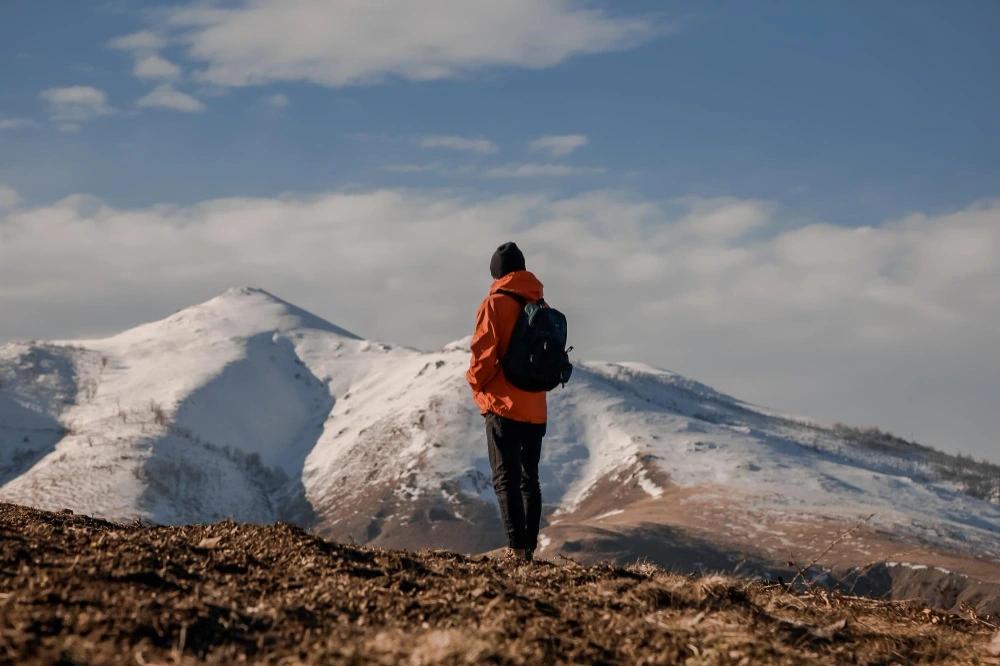Hey there, adventure seeker!
If you’re dreaming of trekking in Nepal, you’re in for a treat. This guide is here to help you figure out the best time for trekking in Nepal, with handy tips and some of the most awesome trekking routes you cannot afford to miss if you are in Nepal. With its breathtaking landscapes, rich cultural heritage, and the towering peaks of the Himalayas, Nepal offers an unparalleled trekking experience that draws adventurers from all over the world.
Understanding the Best Season for Trekking in Nepal
Let’s dive straight into it.
The best time for trekking in Nepal is during the pre-monsoon (spring) and post-monsoon (autumn) seasons. These times are when the weather is just right (not too hot, not too cold), and clear skies with jaw-dropping views of the Himalayas that it offers are breathtaking. Understanding the seasonal variations in Nepal is crucial for planning a successful trek. Let’s explore these ideal trekking seasons in more detail.
Trekking in Spring (March to May): The Best Season for Trekking in Nepal
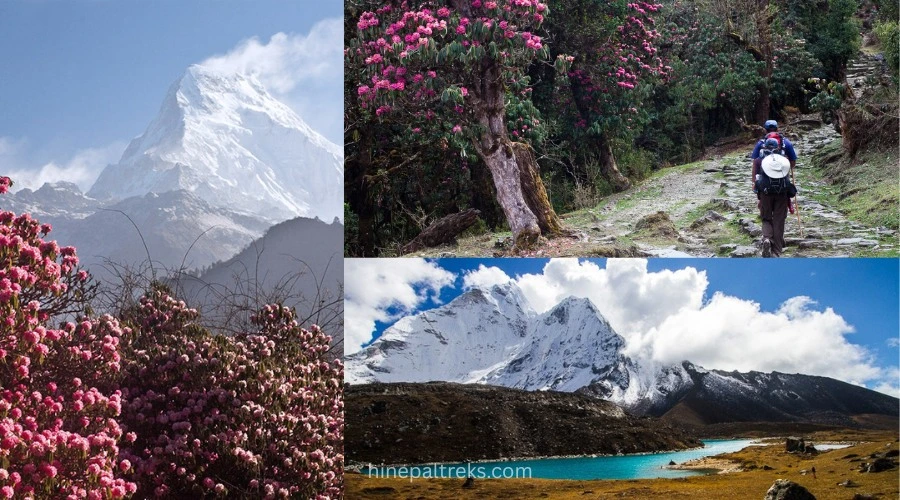
Spring is a fantastic time to visit Nepal for trekking. In Spring, the weather is moderate, and the rhododendron forests are in full bloom. Plus, the days in this season are longer, giving you more time to explore. This is also a great time for those interested in wildlife, as animals are more active.
The trekking trails become vibrant with colorful flowers, creating one of the jaw-dropping and picturesque backdrops for trekkers, trekking in this season. Additionally, the moderate temperatures make for comfortable trekking conditions.
Trekking in Spring also marks the beginning of the climbing season in the Himalayas, and you might encounter mountaineering expeditions making their way to Everest and other peaks. This adds an exciting dynamic to the trekking experience. However, as the season progresses, expect the trails to become busier with adventurers flocking to enjoy the favorable conditions.
Trekking in Autumn (September to November): Another Best Season for Trekking in Nepal
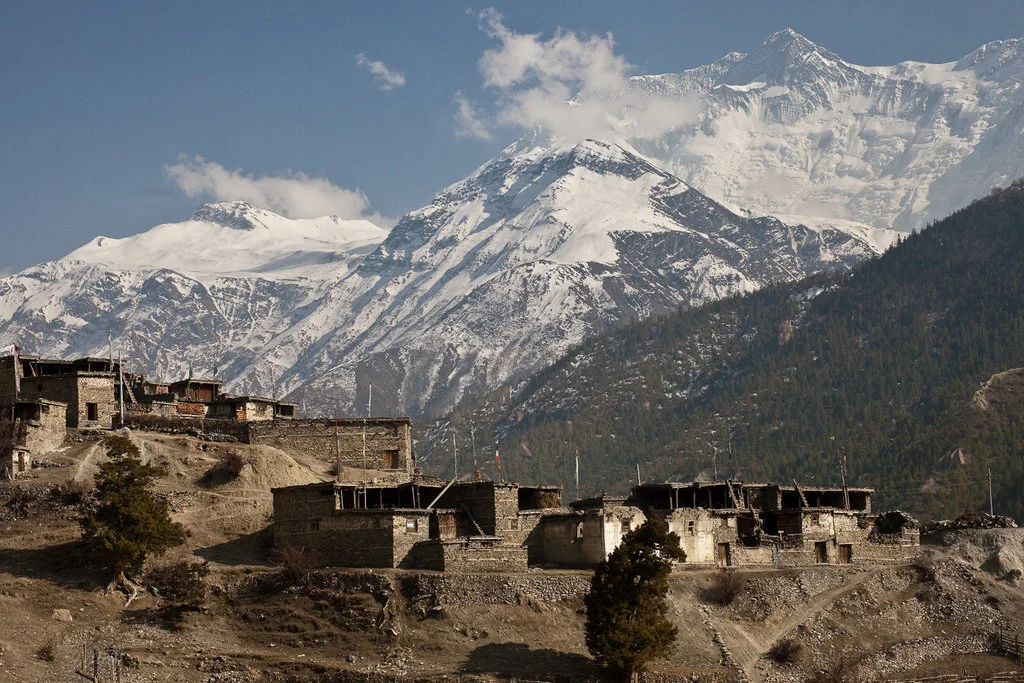
Autumn is yet another best season for trekking in Nepal. The monsoon rains have cleared the dust and pollution, leaving the skies clear and the views stunning. This is peak trekking season, so you might find the trails busier, but it’s worth it for the spectacular scenery and stable weather. The crisp air and unobstructed views of the mountains make autumn an irresistible choice for trekkers.
The cultural festivals during this time, such as Dashain and Tihar, add an enriching layer to your trekking experience. You can witness and even participate in traditional celebrations that reflect Nepal’s vibrant cultural tapestry. The combination of cultural immersion and natural beauty makes trekking in autumn a magical time to explore the trails.
Trekking in Summer/Monsoon (June to August)
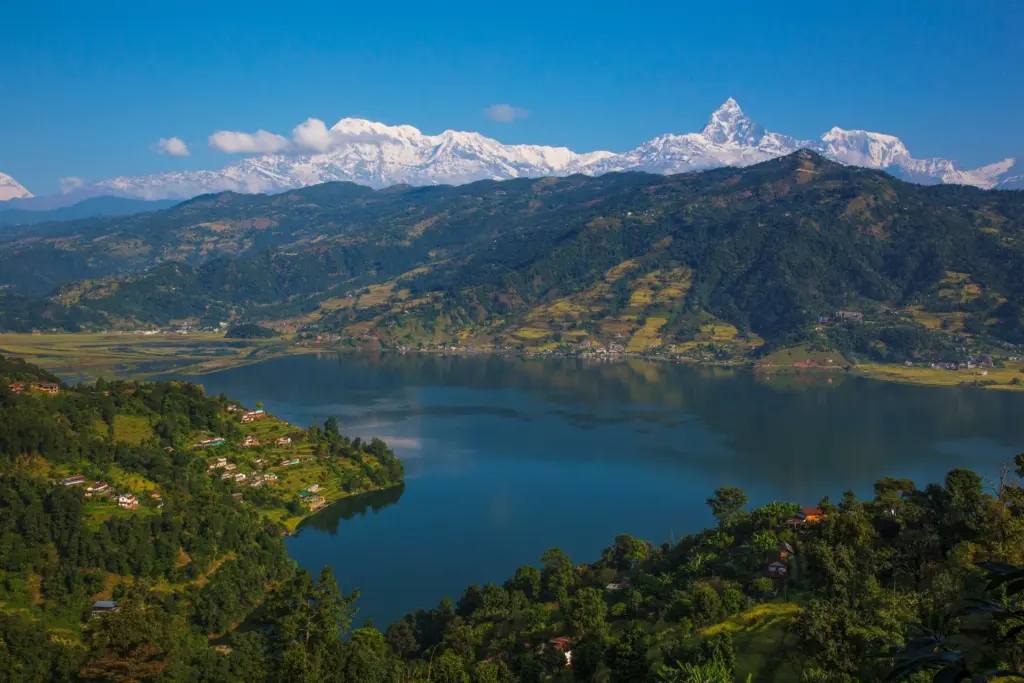
Though not the most popular time for trekking, trekking in summer in Nepal offers its own unique charm. The monsoon season means heavy rains, which can make trekking tricky. Trails can be slippery, and leeches are common. However, if you don’t mind the rain, you can trek in regions like Mustang and Dolpo, which are in the rain shadow and receive less precipitation. These areas offer stunning landscapes with their own distinct beauty, often characterized by arid, dramatic terrains.
For those willing to brave the rain, trekking in summer can provide a quieter, more introspective experience, with lush green landscapes and fewer crowds. Just ensure you are prepared with appropriate waterproof gear and have a flexible itinerary to accommodate the unpredictable weather.
Trekking in Winter (December to February)

Trekking in Winter can be a bit of a challenge due to the cold temperatures, especially in higher altitudes. However, if you’re up for it, you’ll enjoy quieter trails and snowy landscapes. Just make sure you’re prepared with the right gear! Trekking in winter can offer you the experience of a serene, almost mystical atmosphere, as the snow blankets the mountains and valleys.
The clear, crisp skies of winter provide breathtaking views of the snow-capped peaks. This season is ideal for those seeking solitude and a sense of adventure in a less crowded environment. However, be prepared for shorter days, colder temperatures, and the possibility of snow blocking certain high-altitude passes.
Comparing the Four Seasons in Nepal
Nepal has four main seasons, each offering a different trekking experience. Understanding these seasonal differences is crucial to choosing the right time for your trek, as each season brings its own set of challenges and rewards.
While both spring and autumn are considered ideal for trekking, they offer distinct experiences. Spring is characterized by blooming flowers and longer daylight hours, creating a vibrant and lively atmosphere on the trails. In contrast, autumn’s allure lies in its clear skies and cultural festivities, offering trekkers both natural beauty and a chance to engage with local traditions.
Winter offers an isolated time to trek, with fewer trekkers, yet one of the pleasing atmospheres. However, trekking in winter is not for beginners because of the extreme climate and slippery and snow-filled trails, making it difficult to walk.
Trekking in Summer is the least recommended season for trekking in Nepal, due to extreme downpour, and the trail is filled with leeches. Moreover, the rain makes the trekking path slippery, making it difficult to walk, and the risk of floods or landslides is high. On the positive side, trekking in Summer offers one of the isolated trekking experiences, as the number of treks in this season is lowest, with lush greenery.
Choosing the Right Season for You

Choosing between these seasons depends on your preferences for weather, cultural experiences, and the level of trail activity. Both provide exceptional trekking opportunities, but your choice may hinge on whether you prefer the floral beauty of trekking in spring or the crisp clarity of autumn.
Though often overlooked, trekking in summer in Nepal has its own hidden gems. Regions like Mustang and Dolpo, which lie in the rain shadow, offer unique trekking opportunities away from the monsoon’s heavy rains. These areas present a stark contrast to the lush greenery found in other parts of Nepal, showcasing arid, picturesque landscapes that are equally captivating.
For those who embrace the rain, the summer months can offer a more introspective and less crowded trekking experience. It’s a chance to explore the quieter corners of Nepal and witness the dramatic transformation of the landscape during the monsoon.
Trekking in Winter presents challenges with its cold temperatures and snow-covered trails, but it also offers a unique and peaceful experience. The trails are less crowded, and the snow-covered landscapes create a serene and almost magical atmosphere. Trekking in Winter is perfect for those who appreciate solitude and are prepared for the colder conditions with appropriate gear and planning.
Despite the challenges, the reward of breathtaking, unobstructed views of the snow-capped peaks and a chance to enjoy Nepal’s beauty in tranquility make trekking in winter a rewarding endeavor.
Best Trekking Routes in Nepal
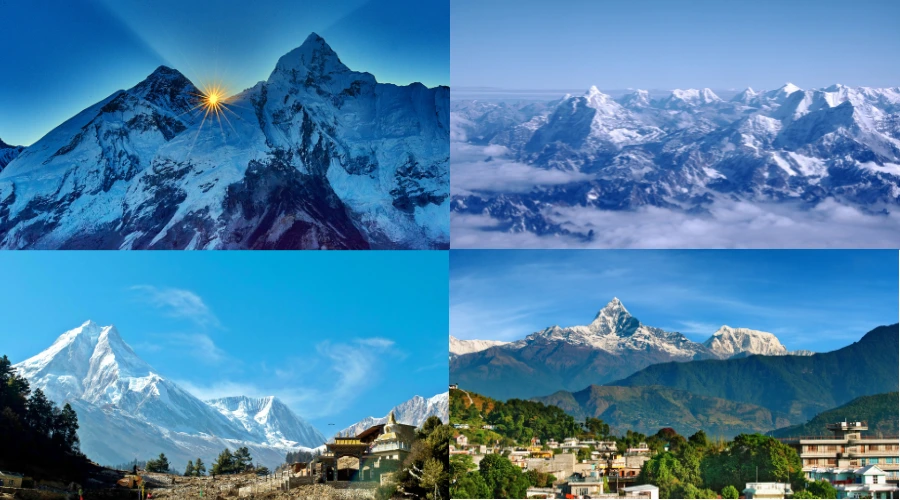
Now that you know when to go, let’s talk about where to go! Here are some of the best trekking routes in Nepal that you should definitely consider. Each of these routes offers a unique blend of natural beauty, cultural encounters, and a chance to explore the diverse landscapes of Nepal.
Everest Base Camp Trek
The Everest Base Camp trek itinerary is the classic trekking itinerary that many adventurers have on their bucket list. It takes you through Sherpa villages, past Buddhist monasteries, and offers stunning views of Mount Everest. Along the way, you’ll encounter the rich culture of the Sherpa people, known for their warm hospitality and deep-rooted traditions.
The trek to Everest Base Camp is not just about reaching the foot of the world’s highest mountain; it’s about the journey through the heart of the Everest region. You’ll have the opportunity to visit iconic sites like Namche Bazaar, Tengboche Monastery, and Kala Patthar for a breathtaking panoramic view of Everest.
Annapurna Base Camp Trek
The Annapurna Base Camp (ABC) Trek is one of Nepal’s most beloved routes, offering an incredible combination of mountain scenery, cultural immersion, and moderate adventure. The trek takes you through charming Gurung and Magar villages, lush rhododendron forests, and terraced farmlands before reaching the stunning Annapurna Sanctuary.
At the base camp, one of the best viewpoints for the Annapurna Region, where trekkers are rewarded with a 360-degree panorama of some of the highest peaks in the world, including Annapurna I, Machapuchare (Fishtail), and Hiunchuli. The ABC trek is ideal for both first-time trekkers and seasoned adventurers seeking a perfect blend of comfort, challenge, and natural beauty.
Annapurna Circuit Trek
The Annapurna Circuit is famous for its diverse landscapes and cultural experiences. You’ll trek through lush subtropical forests and alpine meadows, and enjoy views of the Annapurna and Dhaulagiri ranges. This trek offers a unique opportunity to experience the changing ecosystems and cultures as you ascend and descend the circuit.
The Annapurna Circuit also provides a chance to interact with various ethnic groups, including Gurung, Thakali, and Manangi communities. As you traverse the circuit, you’ll be treated to dramatic views of towering peaks, deep gorges, and stunning high-altitude desert landscapes.
Langtang Valley Trek
If you’re looking for a trek that’s a bit off the beaten path, the Langtang Valley trek is a great choice. It’s less crowded than other popular routes, and offers beautiful landscapes and a chance to experience Tamang culture. The trek takes you through dense forests, past yak pastures, and into the heart of the Langtang National Park.
The Langtang Valley is renowned for its stunning mountain views, including Langtang Lirung, and its rich biodiversity. The warm hospitality of the Tamang people adds a cultural depth to the trek, making it a rewarding journey for those seeking a less commercialized trekking experience.
Manaslu Circuit Trek
This trek is a hidden gem that offers a mix of cultural heritage and natural beauty. It’s a bit more challenging, but the rewards are worth it, with stunning views of the Manaslu region. The Manaslu Circuit trek takes you through remote villages, lush forests, and across high mountain passes, offering a true sense of adventure.
The cultural encounters on the Manaslu Circuit are equally enriching, with a chance to interact with the Gurung and Tibetan communities. The trek’s relative isolation and the pristine environment make it an excellent choice for those seeking an off-the-beaten-path experience.
Other Notable Treks in Nepal
Beyond the well-known routes, Nepal offers numerous other treks that are equally rewarding. The Upper Mustang Trek offers a journey into a once-forbidden kingdom, characterized by its unique Tibetan culture and dramatic desert landscapes. The Kanchenjunga Base Camp Trek takes you to the base of the third-highest peak in the world, offering a remote and challenging adventure.
Each trek in Nepal presents its own set of challenges and rewards, allowing trekkers to choose an experience that aligns with their interests and abilities. Whether you’re seeking cultural immersion, natural beauty, or a sense of adventure, Nepal’s trekking routes offer something for everyone.
Essential Trekking Tips for Nepal
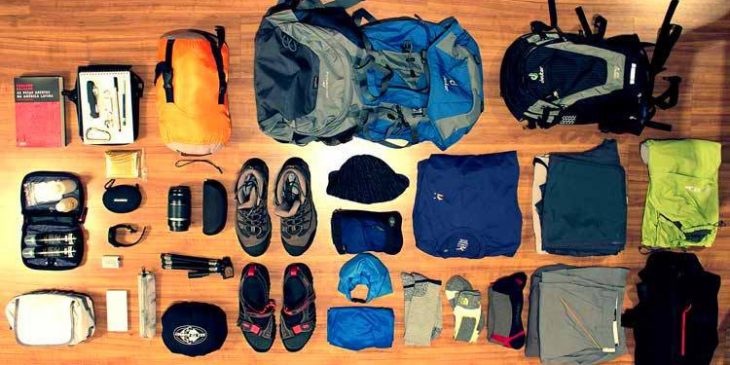
Before you pack your bags, here are some handy tips to ensure you have an amazing trekking experience in Nepal. Preparation is key to a successful trek, and these tips will help you navigate the trails with confidence and respect for the local culture.
Stay Hydrated
The altitude can make you dehydrated, so drink plenty of water. It’s also a good idea to carry a reusable water bottle with a filter. Staying hydrated is crucial for maintaining energy levels and preventing altitude sickness.
In addition to water, consider bringing electrolyte tablets or drinks to replenish essential minerals lost through sweating. Remember that at higher altitudes, the air is drier, and you may not feel as thirsty, but it’s important to keep sipping water throughout your trek.
Pack Smart
You’ll be carrying your gear for long distances, so pack smart. Bring essentials like a good pair of trekking boots, a warm jacket, and a first-aid kit. Packing light doesn’t mean sacrificing comfort; it means prioritizing what you truly need for the trek.
Consider packing versatile clothing that can be layered, allowing you to adjust to varying temperatures. Lightweight, moisture-wicking fabrics are ideal for trekking, and don’t forget essentials like a hat, sunglasses, and sunscreen to protect against the sun’s intensity at high altitudes.
Respect Local Culture
Nepal is rich in culture, and it’s important to respect local customs and traditions. Always ask for permission before taking photos of people, and dress modestly. Understanding and respecting local customs enhances your trekking experience and fosters positive interactions with the communities you encounter.
Learn a few basic phrases in Nepali or the local dialect to show respect and appreciation for the culture. Participate in cultural activities and try local foods to deepen your understanding of the rich traditions and lifestyles of the people you meet along the way.
Be Aware of Altitude Sickness
Altitude sickness is a real concern when trekking in Nepal. Take it slow, and give your body time to adjust to the higher altitudes. It’s okay to take rest days if you need them. Acclimatization is key to a successful trek, and listening to your body is crucial.
Plan your itinerary to include acclimatization days, especially when trekking above 3,000 meters. Stay vigilant for symptoms of altitude sickness, such as headaches, nausea, and dizziness, and descend immediately if symptoms worsen. It’s better to prioritize your health and safety over reaching a specific destination.
Practice Responsible Trekking
Trekking in Nepal comes with a responsibility to protect the pristine environments you explore. Practice Leave No Trace principles by packing out all your waste, avoiding single-use plastics, and respecting wildlife and plant life. Supporting local conservation efforts and choosing eco-friendly accommodations can also contribute to preserving Nepal’s natural beauty for future generations.
Being mindful of your environmental impact not only helps protect Nepal’s ecosystems but also enhances your overall trekking experience by fostering a deeper connection with the natural world.
Final Thoughts: Experience the Magic of Nepal
Trekking in Nepal is more than just a physical challenge; it’s an adventure that offers a unique blend of natural beauty and cultural richness. Whether you’re navigating the trails of Everest or exploring the lush forests of the Annapurna region, each step in Nepal is an unforgettable experience. The diverse landscapes, from towering peaks to serene valleys, create a backdrop of unparalleled beauty. So to make the most out of your journey, it’s crucial to learn the best time for trekking in Nepal.
The local people, with their warm hospitality and rich traditions, add a whole new dimension to your journey. And let’s not forget the stunning vistas that greet you at every turn. From snow-capped peaks to serene valleys, Nepal’s landscapes are truly breathtaking. The opportunity to immerse yourself in the local culture and witness the harmony between humans and nature makes trekking in Nepal a transformative experience.
So, what are you waiting for? Grab your trekking boots and hit the trails. Nepal is waiting to show you its magic! Whether you’re a seasoned trekker or embarking on your first adventure, Nepal promises a journey filled with awe-inspiring moments, personal growth, and memories to last a lifetime.
FAQs
1. What is the best time for trekking in Nepal?
The best season for trekking in Nepal is in the spring and autumn. During these seasons, the temperature is moderate, making it an ideal time to walk, and the weather is clear, offering the best views of the snow-crowned mountains.
2. Who is a famous person from Nepal?
Tenzing Norgay Sherpa is one of the most famous people of Nepal. He is known as the first person to summit Mount Everest on May 29, 1953.
3. Where is Nepal in Asia?
Nepal is a landlocked country, located in southern Asia between the two giants India and China.
4. What is the best month to visit Nepal?
The best month to visit Nepal is January to December because there’s always something to do, something to be part of in Nepal. However, the best time for trekking in Nepal is from March to May (spring) and September to November (autumn).
5. What language is spoken in Nepal?
Thou there are more than 100 languages spoken in Nepal, the mother tongue that unites the whole of Nepal and the Nepalese people is the Nepali Language.
6. Which is the best trek in Nepal?
Some of the best treks of Nepal are:
